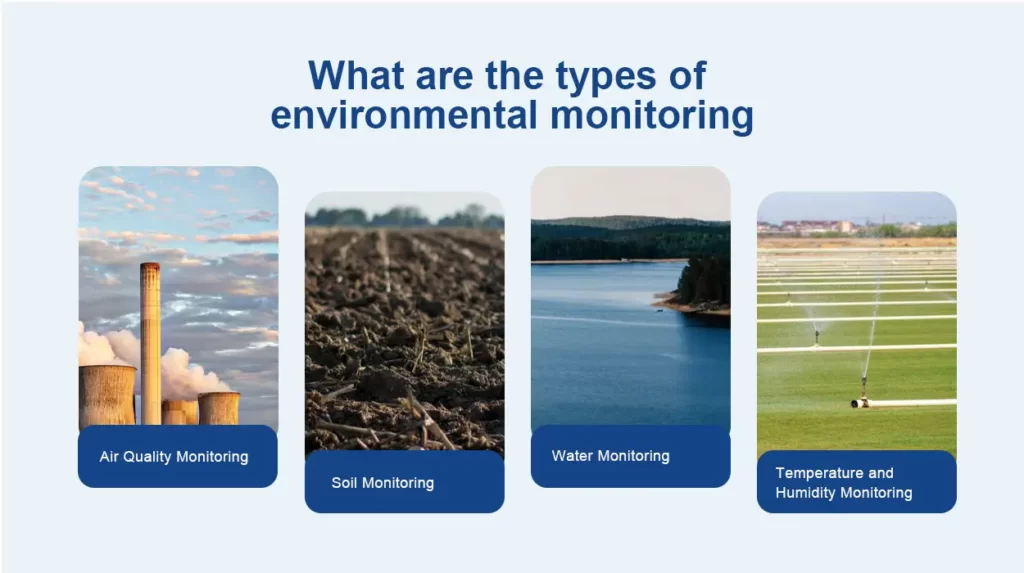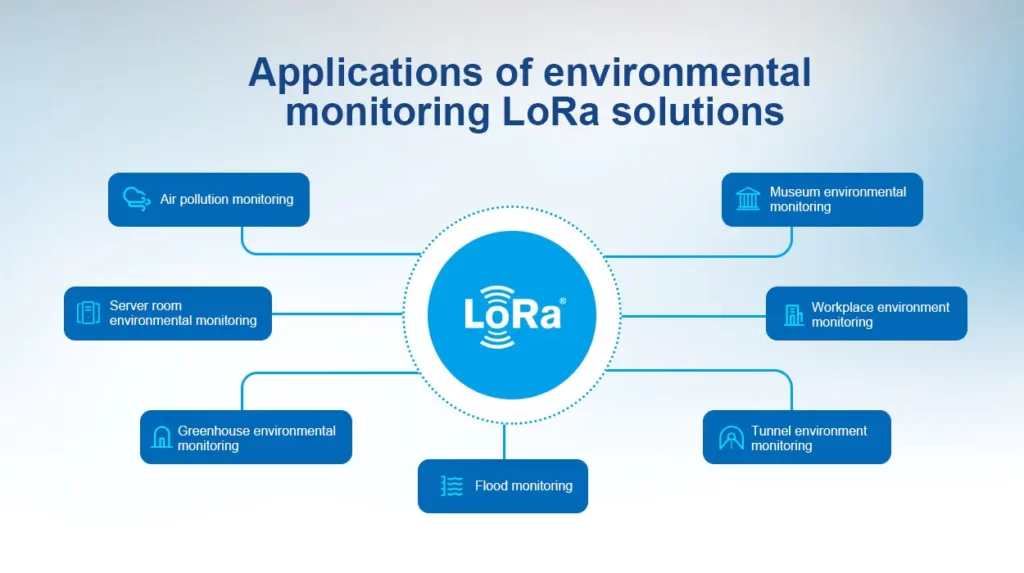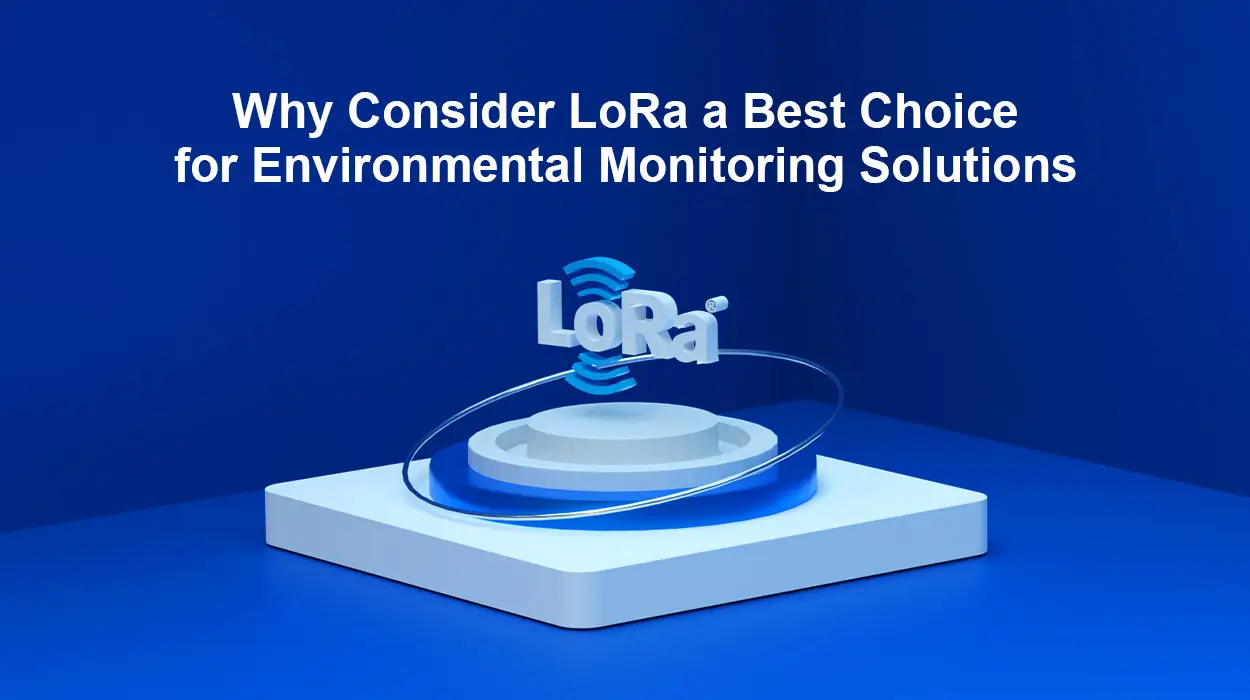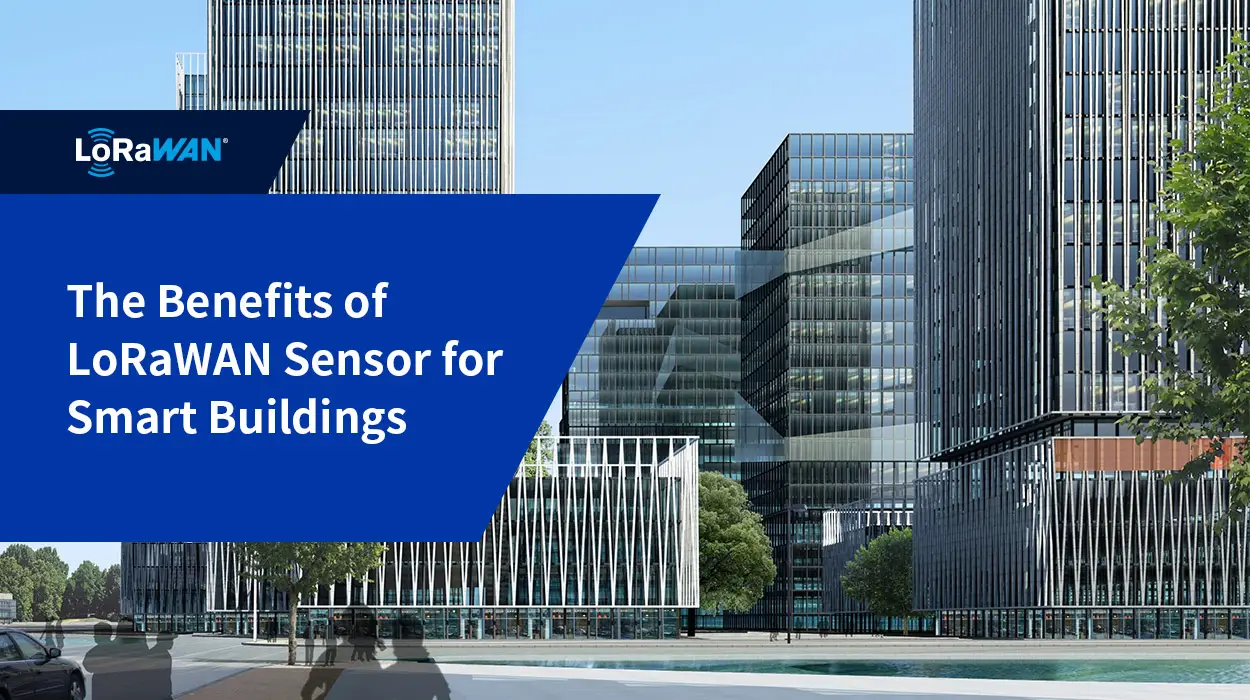The environment plays a huge role in maintaining a wonderful and suitable living space, and poor environment can restrict the sustainable development of society and lead to several adverse effects on people’s healthy life. It is critical to have environment monitoring solutions in residential units, workplaces, educational campuses, and industrial facilities so that they can run smoothly without faltering operations or putting personnel at risk. With the massive acceptance of LoRa in multiple industries like healthcare, agriculture, and industry, it is widely embraced in the environmental monitoring sector. This article walks us through why LoRa is a boon for environmental monitoring solutions.
What is environmental monitoring
Environmental monitoring refers to the measurement of representative values of factors affecting environmental quality to determine environmental pollution degree and its changing trend. The main objective of environmental monitoring is to manage and minimize the impact of any human activity on the environment. Under the premise of ensuring that activities comply with relevant laws and regulations, we are struggling to change people’s behaviors in ways that protect health and diminish risks and dangers on the natural environment.
Environmental monitoring is developed on the basis of environmental analysis, mainly measuring various indicator data representing environmental quality. With the continuous growth of population, industrial activities, and energy consumption, The connotation of environment monitoring is also enriched from the monitoring of industrial pollution sources to the monitoring of the natural environment. Meanwhile, Traditional high-cost, low-density environmental monitoring stations can no longer meet the current monitoring needs. And the adoption of new technologies become the mainstream development trend of environmental monitoring.
Why use LoRa for smart environmental monitoring solutions
The aim of environmental monitoring is to provide relevant parameter data support for environmental management and planning. Environmental monitoring is inseparable from the support of a large amount of reliable real-time data, including indicators such as Pm2.5, wind speed, temperature, and noise. The statistics of traditional monitoring are recorded manually, and the comprehensiveness, timeliness and accuracy cannot be guaranteed. More importantly, it cannot meet the influence of various environmental factors that are complex and changeable now.
At present, most of the environmental monitoring solutions are realized by ZigBee based on short-distance communication or RS-485 bus, which are complicated in wiring and insufficient in communication distance, and cannot be applied in a large scale.
The LoRa-based wireless environmental monitoring system can be designed according to the specific requirements of environment monitoring, and can better solve various existing problems. Adopting the latest sensing technology, LoRa solutions effectively reduce the cost of environment monitoring. By deploying monitoring sites in a wide range, high-density monitoring of the regional environment can be achieved, thus providing support for scientific decision-making.
What are the types of environmental monitoring
The environment is an extremely complex comprehensive system. Only when people obtain a large amount of quantitative environmental information can actionable insights be generated. In daily life, the four main types of environmental monitoring include soil, atmosphere and water, temperature and humidity. Let us look at them in detail.

- Air Quality Monitoring: Air monitoring refers to fixed-point, continuous or regular sampling and measurement of air components, mainly including nitric oxide, hydrocarbons, floating dust, etc. Air monitoring is the basis for air quality control and reasonable evaluation.
- Soil Monitoring: Soil environment monitoring refers to an important measure to understand the state of soil environment quality. For the purpose of preventing and controlling soil pollution hazards, dynamic analysis and measurement of soil pollution degree and development trend are carried out.
- Water Monitoring: Water quality monitoring is the process of monitoring and measuring the types, concentrations and trends of pollutants in water, and evaluating water quality conditions. The monitoring covers a wide range of uncontaminated and contaminated natural waters (rivers, lakes, seas and groundwater) as well as a wide variety of industrial drainage.
- Temperature and Humidity Monitoring: Temperature and humidity monitoring amplifies the measurement of ambient temperature and humidity values by using appropriate measurement methods. Its main purpose is to create a suitable living and working environment for people, a suitable storage environment for commodities, etc.
Benefits of leveraging LoRa in environmental monitoring
The environment monitoring solutions based on LoRa technology can effectively monitor various environmental parameters, The communication distance and power consumption performance have been improved to some extent, which not only realizes the remote real-time monitoring, but also improves the reliability of the whole environmental monitoring system.
- Low cost: One of the biggest benefits of LoRa environmental monitoring solutions is low cost. Low-priced LoRa communication modules and free operating frequency bands greatly reduce the cost of deploying LoRaWAN networks.
- Low energy consumption: Another benefit of using LoRa environmental monitoring solutions is that it has longer operational life. Due to the requirements of low power consumption and low peak current, the transmission and reception of LoRaWAN data requires low current (less than 50mA), which greatly reduces the power consumption of the device. The life of the environmental monitoring equipment can be extended up to 10 years, greatly reducing the cost of support and maintenance.
- Wide coverage and geolocation capability: The communication distance of LoRa in the open area can reach 15 km, which means that very few gateways can cover a huge range. Meanwhile, LoRa’s super penetration ability extends the coverage to indoor and underground, which is beneficial for indoor environment monitoring or groundwater monitoring. The geolocation capability enables rapid location of specific equipment for precise environment monitoring.
- Easy installation and high reliability: The LoRa-enabled environment monitoring solutions are easy to install and scale, and achieve high accuracy and efficiency. By automating some environment monitoring tasks, those involved can free up time to focus on more strategic analysis or management tasks, thereby realizing efficient and reliable monitoring.
Applications of LoRa environmental monitoring solutions
LoRa-based environmental monitoring applications include real-time tracking of various environmental parameters using a variety of smart sensors. The main purpose of the monitoring solution is to ensure that these parameters are within the appropriate range, which is very beneficial for the protection of the environment and the creation of a suitable living environment. The following sections will show you the different applications of LoRa based environmental monitoring solutions.

Air pollution monitoring
Using smart air quality monitoring solutions can help you measure indoor and outdoor air quality and make informed decisions about improvement. Lora’s long-range communications and low-cost sensors make it the perfect medium for determining air quality in a specific facility. These smart connected devices sense the environment, including various pollutants such as toxic gases and particles.
Server room environmental monitoring
Server rooms and data centers are at the heart of network operations. A suitable environmental monitoring solution is crucial to ensure the efficient and stable operation of equipment in the server room. Real-time monitoring of various indicators of the computer room environment often includes temperature, humidity, water leakage, fire, etc. An alarm can be given quickly and automatically in case of an emergency.
Greenhouse environmental monitoring
LoRa-based greenhouse environmental monitoring system uses environmental data and crop information to guide users in proper planting management. It is widely used in agriculture, horticulture and animal husbandry, etc. In places where special environmental requirements are needed, real-time monitoring and management are carried out, thus providing timely and scientific basis for healthy growth of crops and adjustment of cultivation.
Museum environmental monitoring
As an important place for displaying, keeping and storing cultural relics, museums must take effective measures to protect historical and cultural treasures. Only by doing an excellent job in the protection of cultural relics can the value of cultural relics be better displayed and maintained. LoRa-enabled museum environmental monitoring solution plays a big role in ensuring the safety of cultural relics storage environment, and can largely avoid the harmful effects of environmental factors such as temperature, humidity, noise and gas on the collection.
Workplace environment monitoring
There are many sources of pollution in the office environment, which come from various decorations, office furniture and equipment. This coupled with the widespread use of air conditioning made natural ventilation impossible. Therefore, the monitoring of indoor air quality and ambient temperature and humidity in office buildings has become a common demand. A healthy and comfortable office environment is critical to improving employee motivation and productivity.
Tunnel environmental monitoring is crucial to ensure construction safety. Due to the confined and narrow construction space, accidents such as falling rocks, floods, and landslides are prone to occur. Therefore, it is of great significance to use advanced smart sensors to monitor the tunnel environment. The strong penetration of LoRa makes it possible to achieve remote wireless communication within the tunnel.
Flood monitoring
Flood is one of the major challenges faced by people all over the world, especially in coastal areas. The rising water level caused by tide and rainstorm weather poses a great threat to people’s lives and property safety. By deploying LoRa flood sensors at watersides and necessary places, the monitoring water level data can be collected in real time, and an alarm can be sent when a specific water level is reached.
Conclusion
Environmental monitoring is the basis of the entire environmental protection task and scientific research. Advances in wireless communication technology allow the use of IoT-enabled fixed or mobile sensors to measure and monitor various environmental parameters in both small and large geographic areas. The collection and accessibility of this data, supported by environmental monitoring solutions, facilitates scientific planning and decision making.










